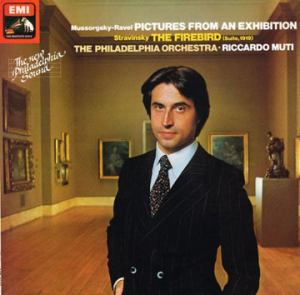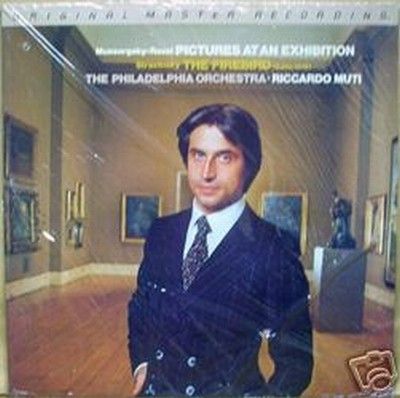More of the music of Modest Mussorgsky (1839-1881)
Reviews and Commentaries for Mussorgsky’s Music
- This British EMI import pressing boasts outstanding Double Plus (A++) sound on both sides
- Our favorite performance by far, with big, bold and powerful sonics like no other recording we know
- The brass clarity, the dynamics, the deep bass and the sheer power of the orchestra are almost hard to believe
- No vintage recording of these works compares with Muti’s – and Stravinsky’s Firebird Suite is an extra special added bonus on side two
- There are about 150 orchestral recordings we’ve awarded the honor of offering the Best Performances with the Highest Quality Sound, and this record certainly deserve a place on that list.
This EMI import pressing gives you the complete Pictures at an Exhibition with a TOP PERFORMANCE and SUPERB SONICS from first note to last.
As this is my All Time Favorite performance of Pictures, this record naturally comes very highly recommended. Pictures is a piece of music that has been recorded countless times, and I’ve played scores of different recordings, but the only one that truly satisfies is this one, Muti’s 1979 recording with the Philadelphia Orchestra. Much like Previn and the LSO’s performance of The Planets, he finds the music in the work that no one else seems to.
For his 1979 review of the Mussorgsky, Robert Layton in the GRAMOPHONE writes of Muti and The Philadelphia Orchestra :
…what orchestral playing they offer us. The lower strings in ‘Samuel Goldenberg and Schmuyle’ have an extraordinary richness, body and presence, and “Baba Yaga”, which opens the second side, has an unsurpassed virtuosity and attack as well as being of demonstration standard as a recording. The glorious body of tone, the richly glowing colours, the sheer homogeneity of the strings and perfection of the ensemble is a constant source of pleasure.
Of the performance of Stravinsky’s Firebird, Layton writes:
…Muti’s reading is second to none and the orchestral playing is altogether breathtaking. The recording is amazingly lifelike and truthful.


